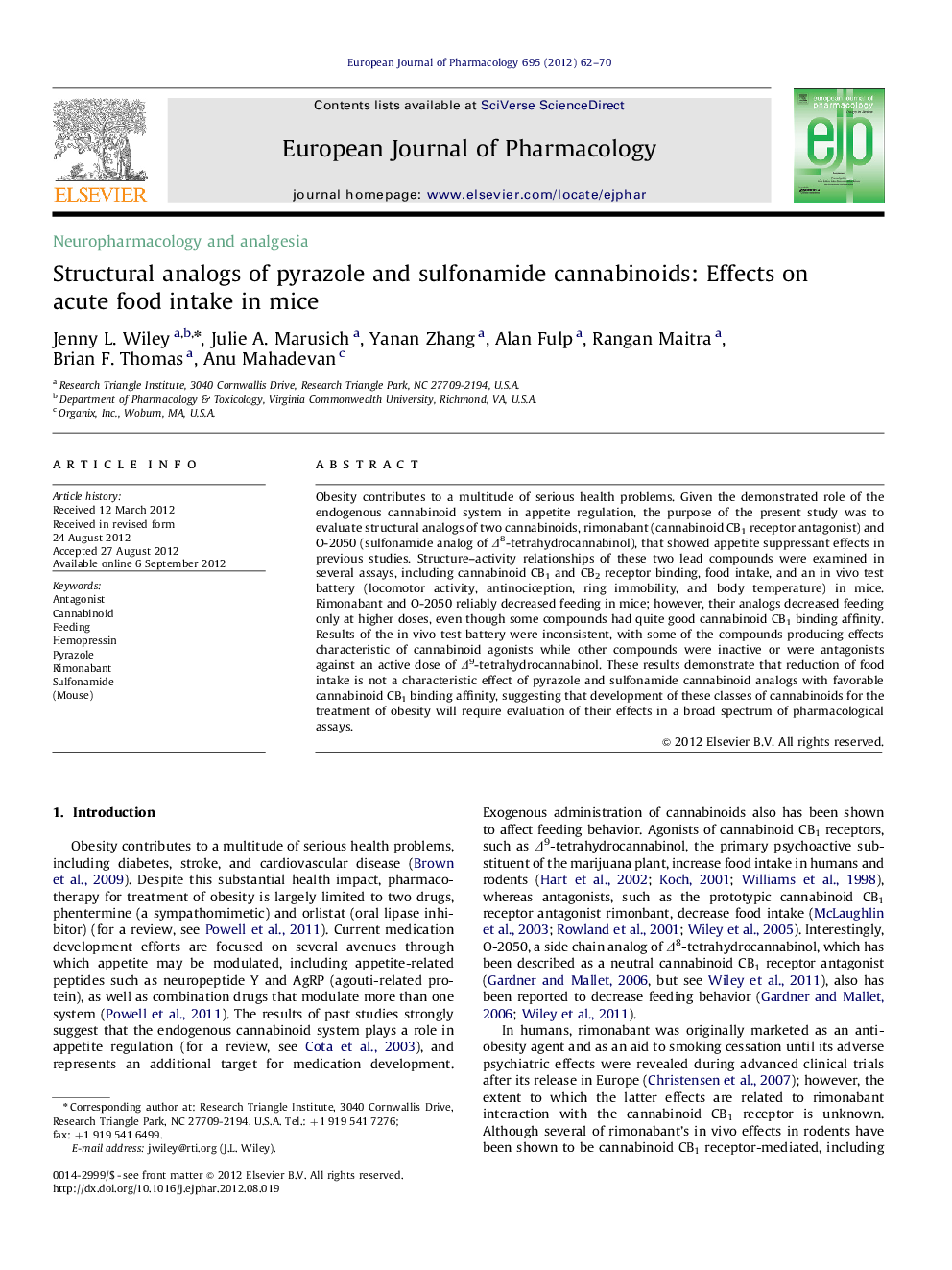| Article ID | Journal | Published Year | Pages | File Type |
|---|---|---|---|---|
| 2532310 | European Journal of Pharmacology | 2012 | 9 Pages |
Obesity contributes to a multitude of serious health problems. Given the demonstrated role of the endogenous cannabinoid system in appetite regulation, the purpose of the present study was to evaluate structural analogs of two cannabinoids, rimonabant (cannabinoid CB1 receptor antagonist) and O-2050 (sulfonamide analog of Δ8-tetrahydrocannabinol), that showed appetite suppressant effects in previous studies. Structure–activity relationships of these two lead compounds were examined in several assays, including cannabinoid CB1 and CB2 receptor binding, food intake, and an in vivo test battery (locomotor activity, antinociception, ring immobility, and body temperature) in mice. Rimonabant and O-2050 reliably decreased feeding in mice; however, their analogs decreased feeding only at higher doses, even though some compounds had quite good cannabinoid CB1 binding affinity. Results of the in vivo test battery were inconsistent, with some of the compounds producing effects characteristic of cannabinoid agonists while other compounds were inactive or were antagonists against an active dose of Δ9-tetrahydrocannabinol. These results demonstrate that reduction of food intake is not a characteristic effect of pyrazole and sulfonamide cannabinoid analogs with favorable cannabinoid CB1 binding affinity, suggesting that development of these classes of cannabinoids for the treatment of obesity will require evaluation of their effects in a broad spectrum of pharmacological assays.
